Your 6-month old puppy isn’t an adult yet! He continues to grow and change daily. Learn about the milestones (major and minor) that your Dood will hit this month – and what you need to know as a Doodle parent.
You have now watched your puppy go through his rapid development of the juvenile stage from ages 2-6 months. But now that he has reached 6 months, he is now considered an adolescent, one of the most significant puppy development stages.
Adolescence signals the end of your puppy’s babyhood… and marks the beginnings of:
- Testing behaviors reminiscent of human teenagers (rebellion).
- Destructive behaviors, often caused by boredom due to the increase in energy and confidence.
- And sexual maturity.
In other words, you’re in for it.
(Don’t say we didn’t warn you!)
To best prepare for what I like to call the “little hellion” stage, it might interest you to learn what to expect this month from your pup, both developmentally and as a Doodle parent.
Learn How to Care for Your Doodle Puppy!
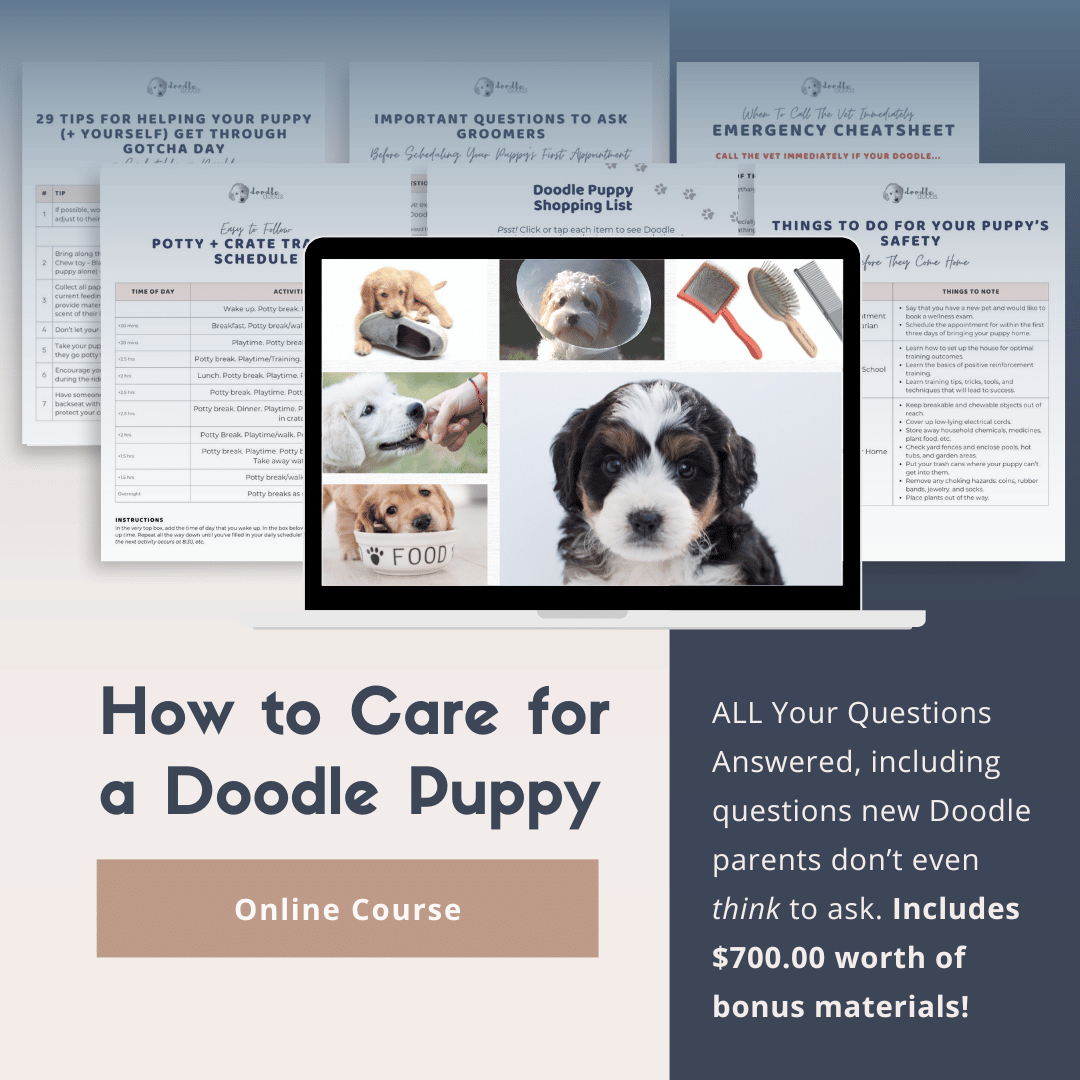
Perfect for first-time Doodle parents, get ALL your questions answered, including questions new Doodle parents don’t even think to ask.
Plus, get $700 worth of Bonus Materials for FREE, including:- Doodle Parenthood Community and Support Group ($190 value)
- Doodle Puppy Growth Tracker ($20 value)
- EMERGENCY Cheatsheet: When To Call The Vet Immediately ($50 value)
- HELP! Button ($145 value)
- And SO MUCH MORE!
Fear Imprint Stage
If you haven’t noticed it already, you’ll likely notice it soon: your dog nearly jumping out of his skin with fear over things that shouldn’t seem scary at this point. Things like a shadow, a fire hydrant, or the couch pillow.
All puppies go through multiple different developmental periods, and it’s about time for the Fear Imprint Period. The first fear period was around 2-3 months. Now, your pup may begin experiencing the second fear period anytime between now and 18 months. Luckily, it won’t last the entire 12 month period, but will probably show up in fits and spurts.
24-28 Week Old Puppy Growth: Physical And Behavioral Development
Your Doodle has been busy growing and learning – and now a shift is happening. Your puppy is now an adolescent, so basically he’s a puppy brain in an (almost) adult body. He will likely exhibit moments of increasing territoriality as well as moments of puppy insecurity.
Expect behaviors on both ends of the spectrum as your puppy is assimilating more about the world around him. Here’s what you need to know as a Doodle parent entering the adolescent stage.
6-Month Old Puppy Physical Development
- Puppies will reach sexual maturity between now and 8 months of age. Consider having yours spayed/neutered after growth stops – around 6 months if he’s a small Doodle (less than 50 lb.) and between 9-15 months if he’s a large Doodle (over 50 lb.). Talk to your vet and develop a plan.
- If your 6-month old puppy isn’t already spayed/neutered, he may start exhibiting sexual behavior around this time.
- A female will likely go into heat (estrus) sometime between now and 8 months. She can easily become pregnant, so keep a close eye on her now for swelling of her vulva and any discharge.
- Males, neutered or not, will likely begin to lift their leg to urinate and may start to mark areas with urine. (This is normal for both neutered and unneutered males, but marking behavior tends to be less severe in neutered dogs).
- Small Doodles (under 25 lb.) are nearly finished growing by this time but may continue to fill out in weight over the next 3-6 months.
- Large and giant Doodles (over 55 lb.) may be at about half their adult size by this month.
- Medium Doodles (25-55 lb.) are about 75% grown by now but will keep growing at a slower rate.
- Between 6 months and 8 months, your Dood’s body may look “lanky” and awkward and yet somehow even more adorable!
- Keep track of their growth with our Doodle Puppy Growth Tracker and keep in mind he’s growing at an individual rate!
- Make sure you are feeding puppy food (and the right amount of it) because your puppy will likely need more and more. Tracking his weight and growth will help you know whether to give him more food or cut back a little.
- Puppy should be in full control of his bladder and bowels, and fully house trained by now. However, he may still have an occasional accident in the house, especially if there is a change in the routine. This is normal. Continue to be patient and consistent with training.
- Your 6-month old Dood should have all of his adult teeth by now, so teething should be over and he may chew less obsessively. Remember, though, that chewing is still normal, so make sure you have plenty of healthy dog chews on hand. If you still see that he has puppy teeth, have your vet take a peek because they may need to be removed.
- As your puppy’s adult coat continues to emerge, brush him every day to avoid matting as he starts to shed his puppy coat. Also, trim his nails weekly.
6-Month Old Puppy Behavioral Development
- He’s an adolescent now, and he may begin to show testing behaviors reminiscent of human teenagers. Expect to see:
- A rebellious side to your pup as he begins to test his limits.
- Puppy ignoring cues that he was previously trained on, or acting like he “forgot” his training.
- An increase in energy and willfulness.
- Destructive behavior, which is often caused by boredom due to the increase in energy and confidence.
- Expect your puppy to challenge you more as he explores dominance and his role in the pack.
- A male will begin to show an interest in female dogs, specifically those in heat.
- Male and females alike may go to great lengths and escape the house to mate.
- If you notice your 6-month old puppy exhibiting marking behavior, work to curb it early because it’s easier to stop then. Stop them in the act and redirect them to a more appropriate place.
- Doodles that aren’t spayed or neutered at this point will pay less attention to you and focus more on finding a mate.
- Puppy now understands that he has a pack (which may consist of both humans and dogs), and his behavior will be most influenced by this group.
What To Expect As A Doodle Parent Of A 6-Month Old Puppy
- Even with the best preparation, things may get difficult from time to time during this period. This is not the time to expect model behavior.
- Your Dood may exhibit some destructive chewing, which is often the result of a combination of teething, adolescence, and boredom.
- Think about getting your puppy spayed/neutered after growth stops – if he’s a small Doodle, it’s probably about time. Talk to your vet.
- Continue to provide safe opportunities for vigorous play and exercise to curb destructive behavior. A tired puppy is a non-destructive puppy!
- Between 6 and 12 months of age, your Dood may act like he “forgot” his training. Be consistent and firm. Now is a good time to fine-tune obedience training. Continue to have regular training sessions, covering the old basics again, and mix in newer, more difficult tasks. Keep working on the recall cue, impulse control (teaching your pup to wait until you say he can take a treat or toy), learning the word “no,” and adding an emergency recall.
- Continue to expose your 6-month old puppy to new experiences, people, places, things, and sounds.
- Be sure to reward your Doodle for calm behavior and ignore him for fearful behavior.
- Manipulate his paws and mouth daily (or at least regularly) to get him used to having his nails trimmed and teeth brushed.
- Take time to enjoy all those heart-melt moments with him!
Precautions
- If your Dood is still having major issues with house training, contact your vet for advice; he may have a health issue that needs treatment.
- Be sure that your 6-month old puppy is safely confined to the house and yard, as he may go to great lengths and escape to mate.
- As your puppy matures, you may start to notice new behavior issues. Don’t assume he will grow out of it; address those issues as soon as possible. If the issues are too hard to correct or manage on your own, consider hiring a dog trainer or behaviorist to help reinforce his training.
- During your Doodle’s occasional lapses of obedience, avoid situations that could have harmful results. For example, off-leash work in an unsecured (not fenced) area.
- Continue providing a lot of puppy-safe toys and be sure to keep “chewables” out of reach (i.e. electrical cords, shoes, and houseplants).
- Do an evaluation once a week on how much you’re feeding your pup to see if the amount needs to be adjusted.
- Don’t punish your puppy. Instead, redirect unwanted behaviors and reward desired behaviors.
Take your Doodle’s more rebellious behavior in stride and stick with your routine and training. It will help keep you moving forward rather than starting (almost) all over again once they are more receptive to you. All in all, your 6-month old puppy is still changing rapidly and you’re seeing more and more glimpses of your pup as an adult dog each day.
Find out more about what to expect with your puppy from next month.
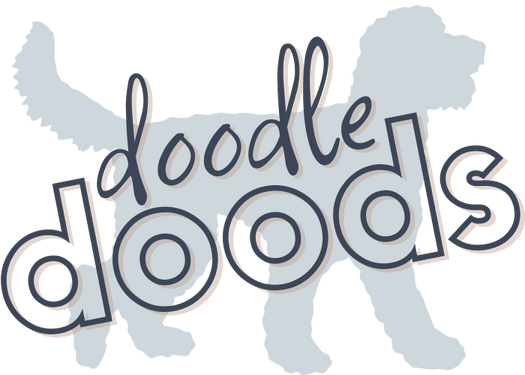
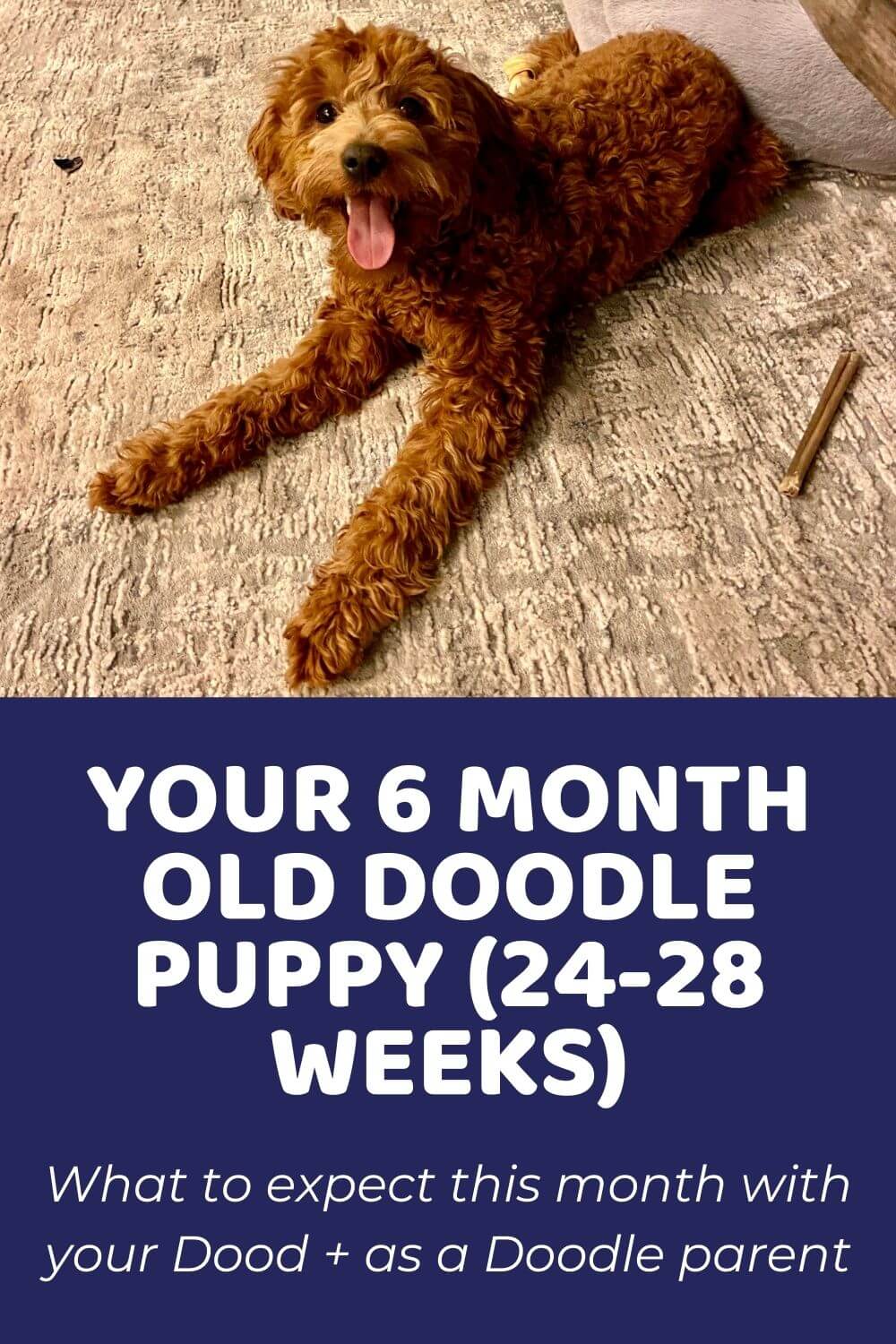

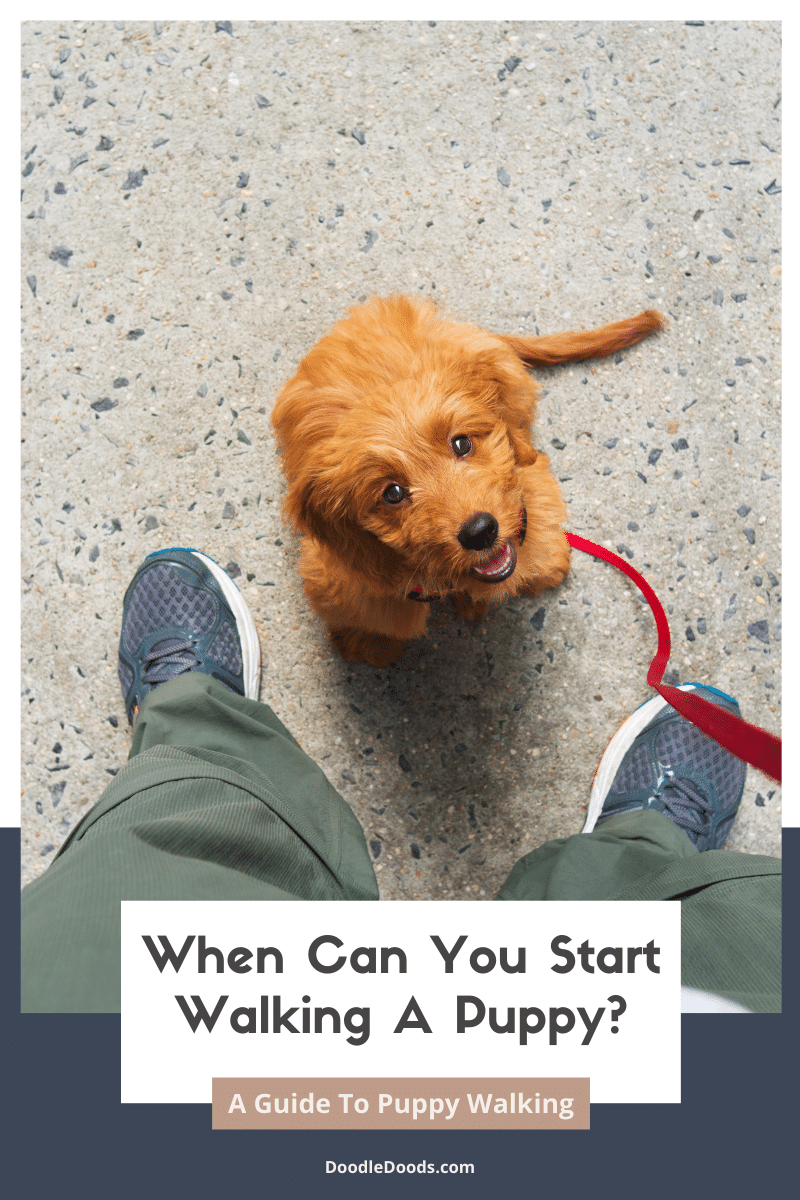
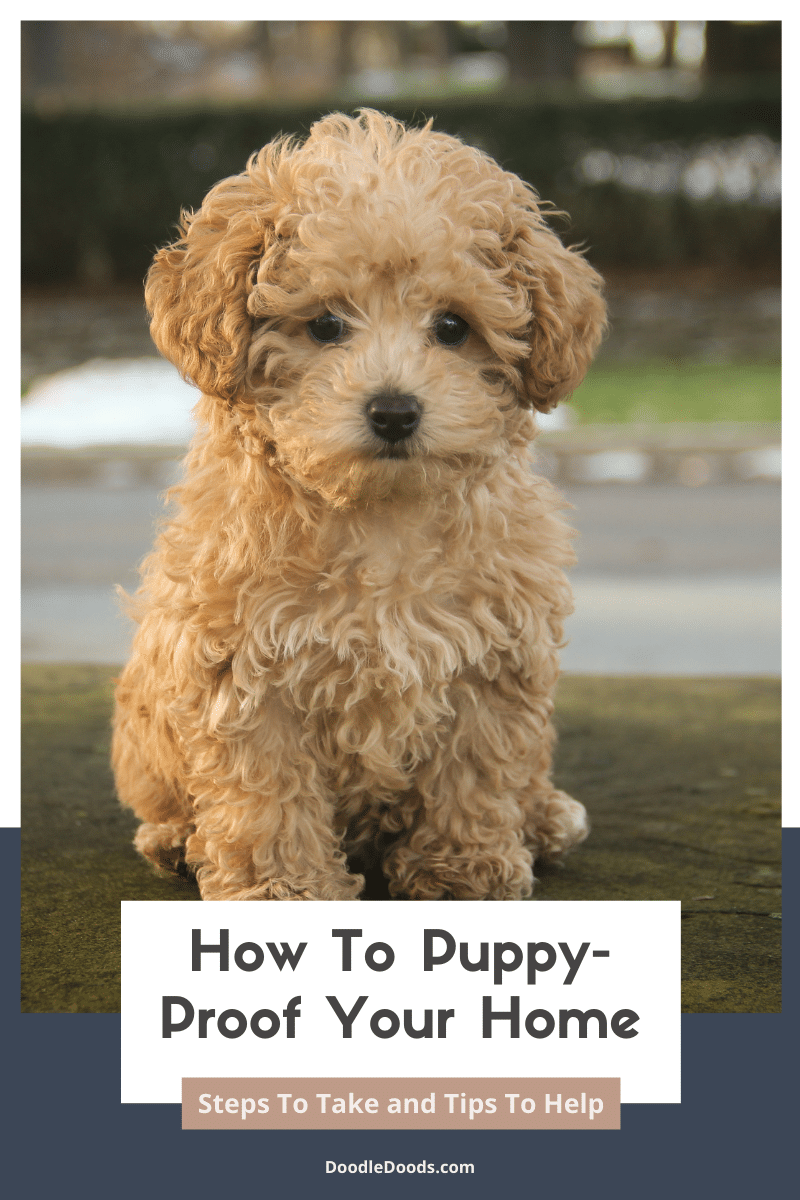
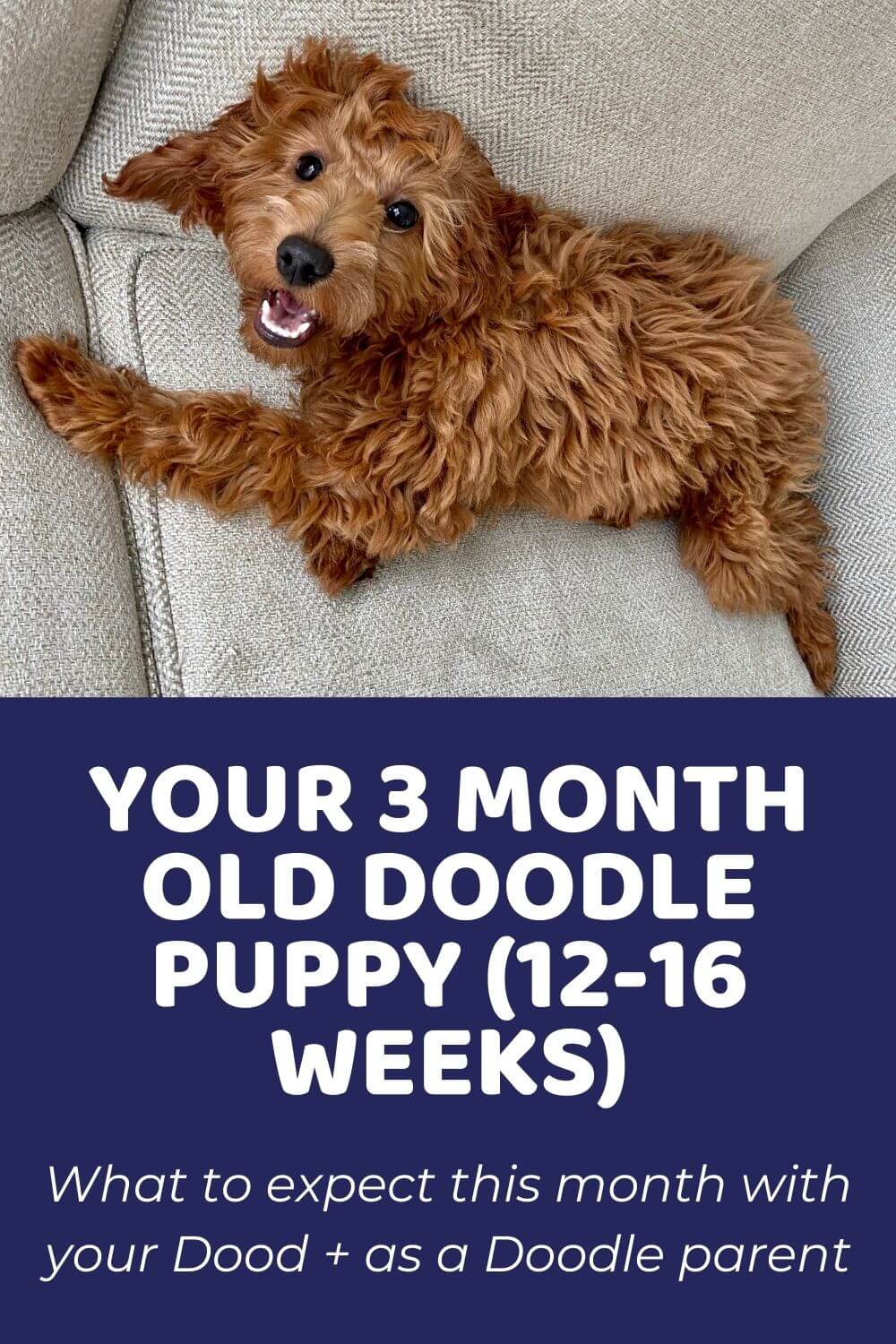
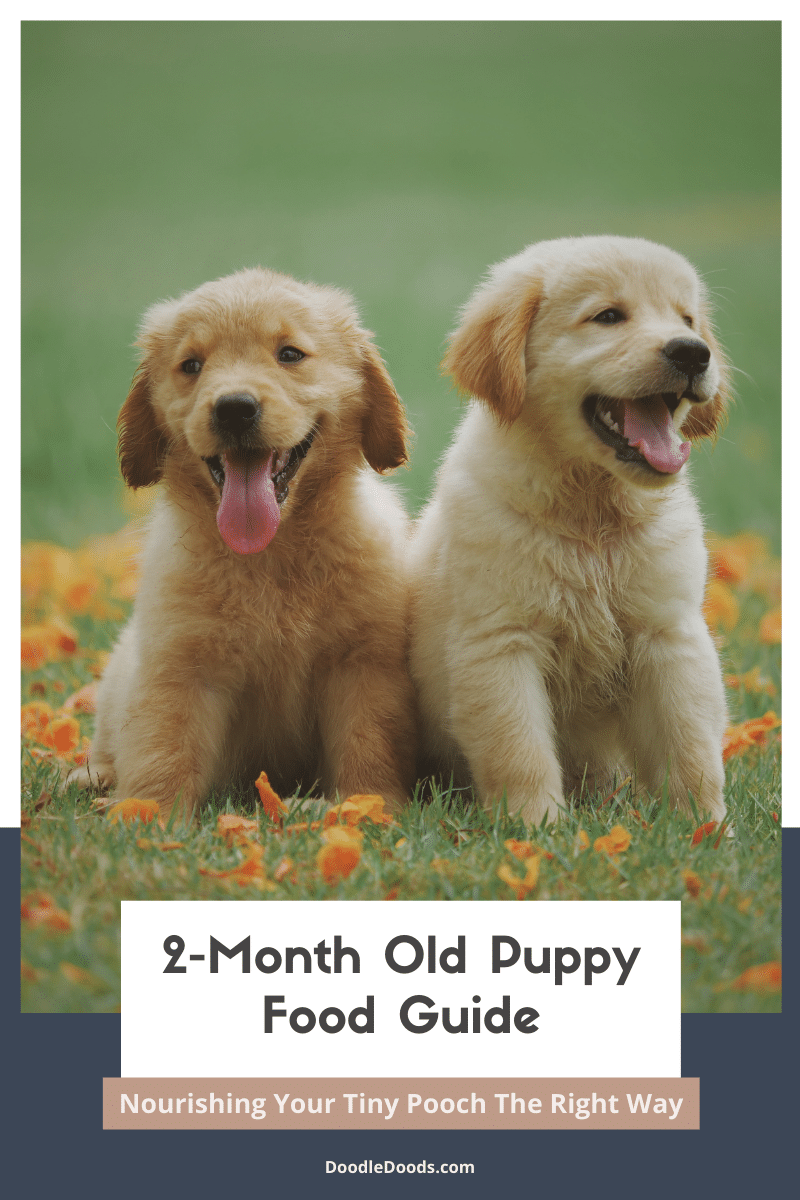
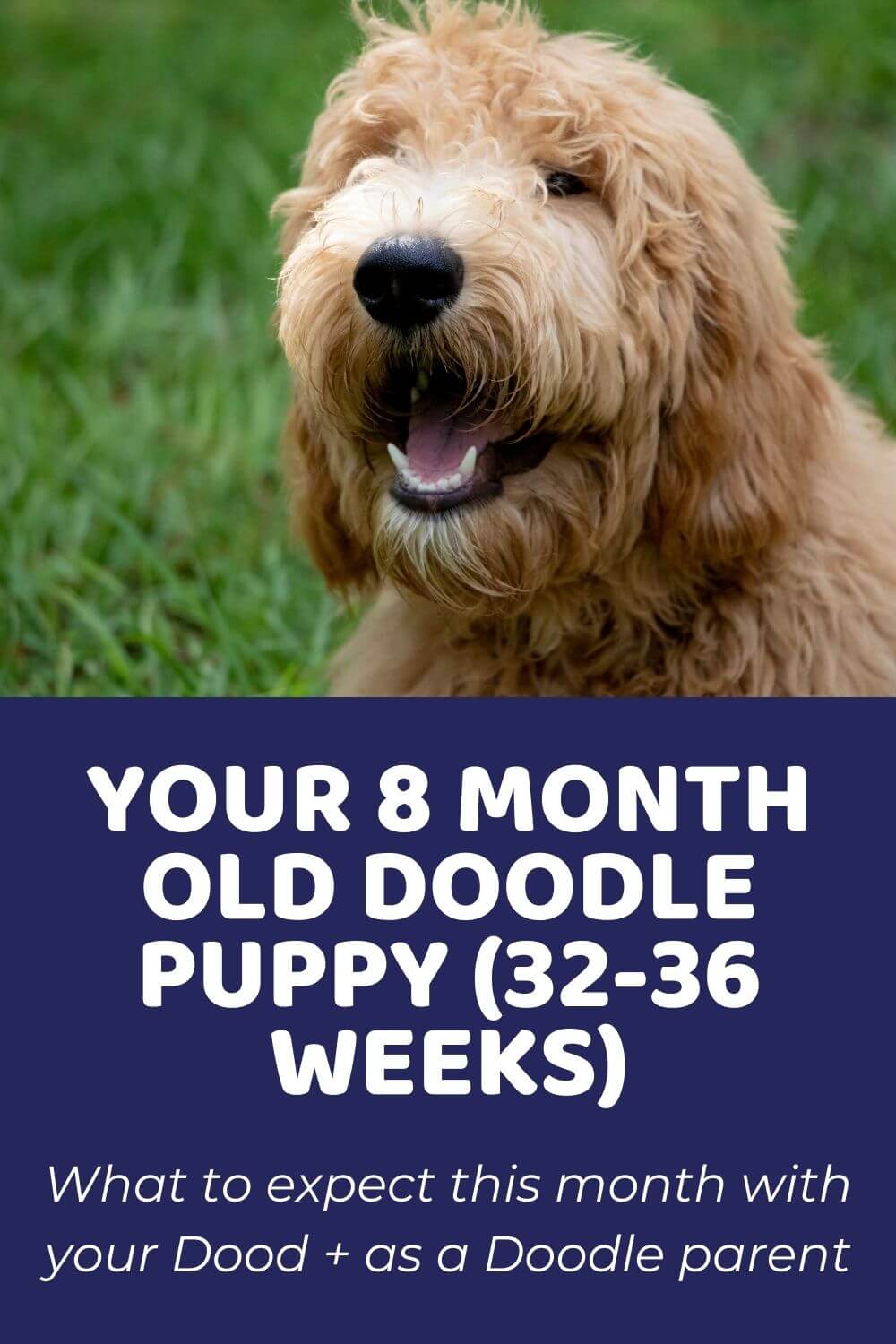
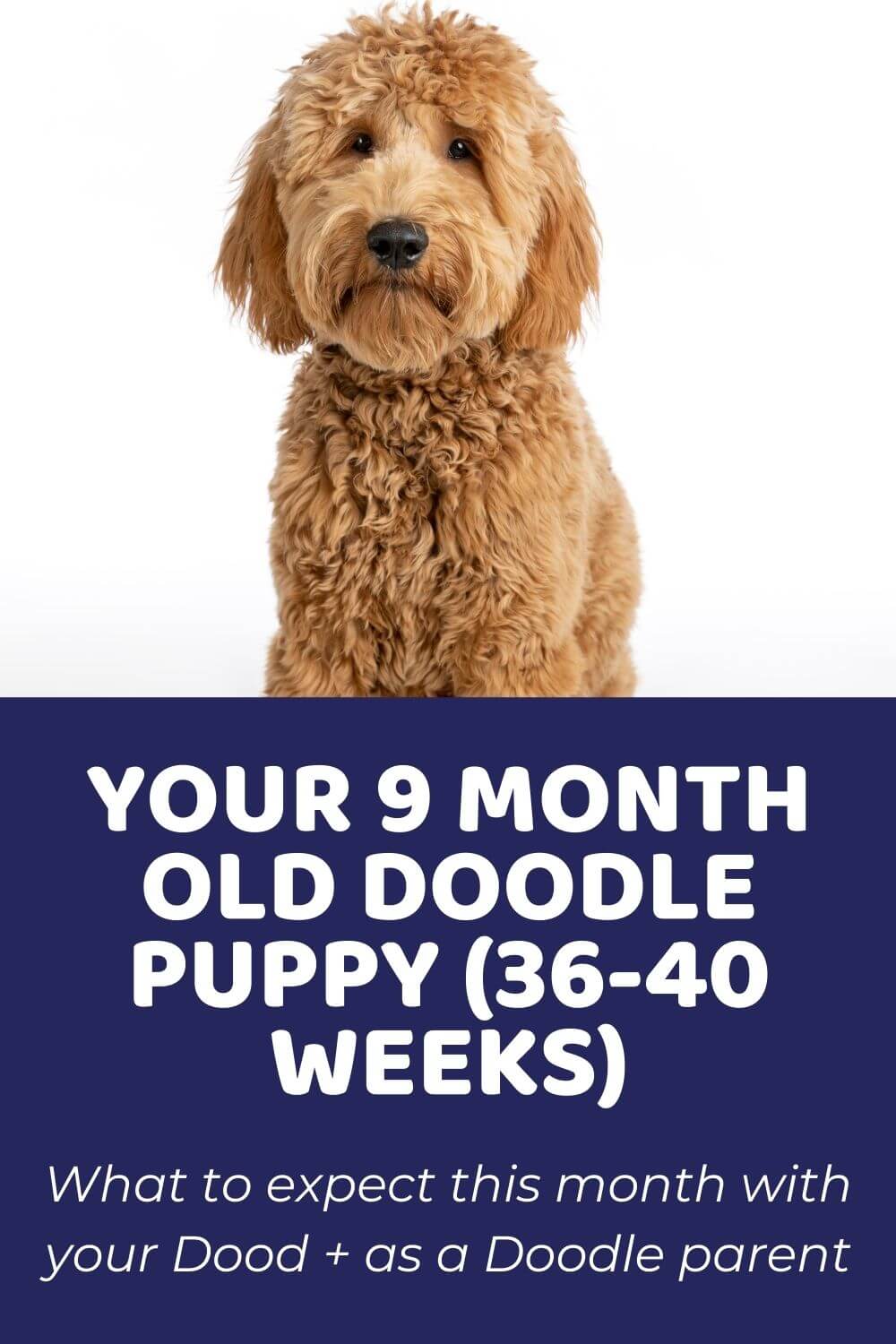
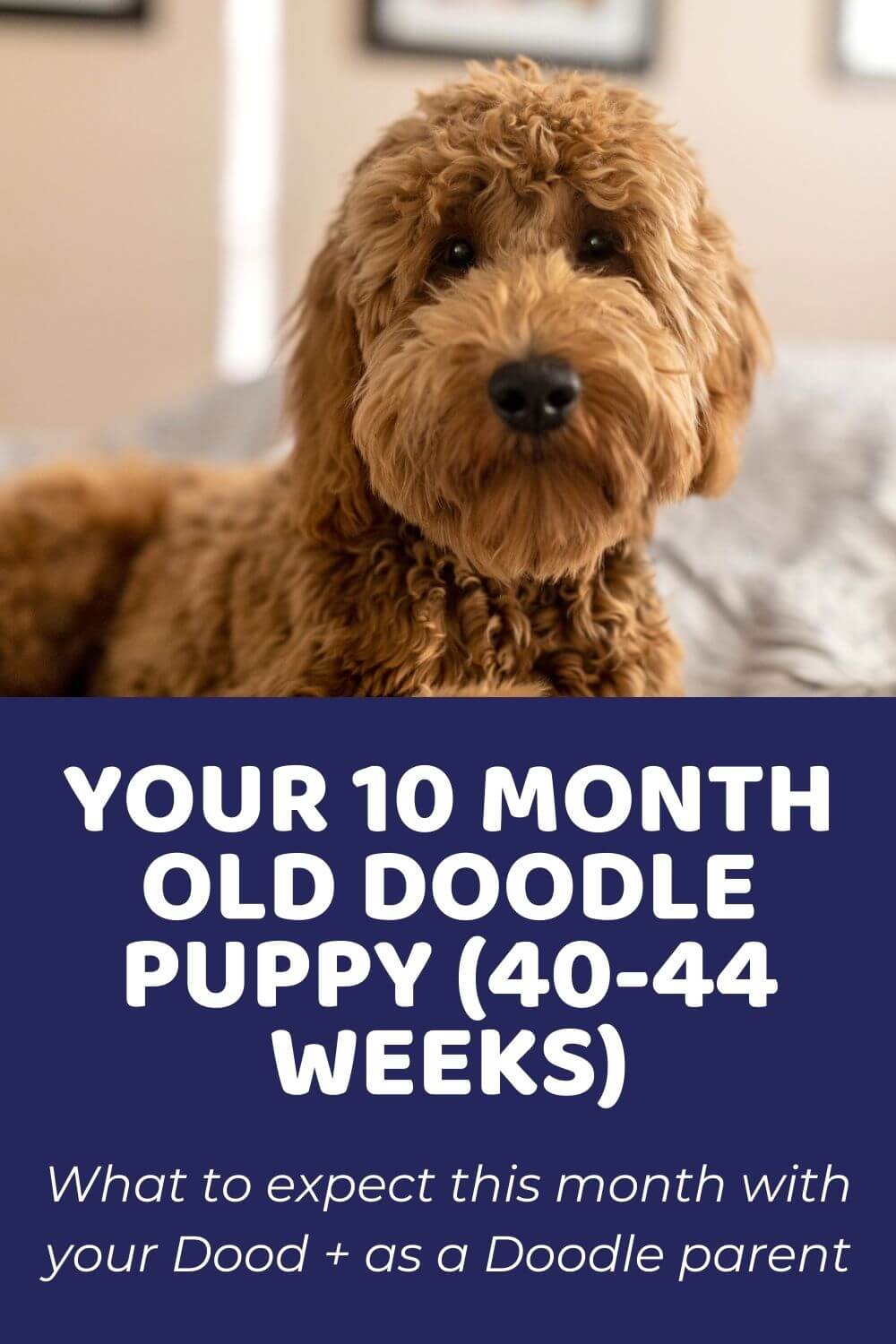

Your advice was spot own! Redford is afraid of everything. Thunder, chain saws (we have a crew here in our yard today sawing off limbs that were destroyed in an ice storm) and leaf blowers in other yards. I thought this was strange since he hadn’t been afraid before, but thanks to your advice, I now understand why. He is somewhat territorial. He barks at people he can sense (smell?) walking by the house, but he backs up as he is barking.
February 9, 2023 at 12:07 pmIn Jan he went to obedience training, where he was boarded for two weeks He was taught commands, taken to a store and played with the trainer’s children. He came home a different dog. He was so obedient and responsive and we continued the training; however he has become somewhat lax. I thought it was our fault but now I know that he is just in his teens.
Thank you for helping us to understand better what is happening.
He still has “accidents” (I call them “own purposes”) in the house but he is getting better.
Again thank you for all of your help.